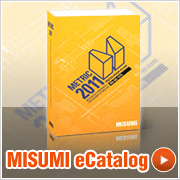#222 Weight Reduction Techniques - 2: Overview of Weight Reduction Techniques
Weight-reduction techniques are of particularly necessity for fast-moving machines.
*In the aerospace industry, high-strength and high-reliability materials are extremely important, and there has been a shift towards using CFRP composite materials as a replacement for lightweight metals such as Duralumin.
*The same materials used for airplane bodies are adopted for F1 racing car bodies.
*The arm parts of electronic packing machines and conveyance robots are examples of their use in high-speed drive units.
Weight-reduction techniques by material substitution are applied to the above case examples.
(1)Weight reduction by material substitution
To make a product lightweight by material substitution, the following technical requirements must be satisfied at the same time:

(2)Material design to guarantee strength after material substitution
- For material substitution from a metal to a resin, adopt a composite structure in order to reduce weight while achieving the guaranteed strength.
- The "CFRP" in CFRP composite materials is an abbreviation of "Carbon Fiber Reinforced Plastics."
- Carbonize the fiber and adopt it to the structural member inside the resin. The fiber continuum and adhesive strength of the resin will make the material lightweight and shatter-proof.
![[Fig.] Carbon fiber and molding [Fig.] Carbon fiber and molding](http://www.misumi-techcentral.com/tt/en/lca/463_2.gif)
|
- Positioning technology
- Designing and processing
- Sensor Technology
- Automation elements technology
- Clean room technology
- Design hints
- Design tips
- Designing and Machining
- Drive mechanism design
- Hints on designing
- Linear Motion Components
- Locating Technology
- Manufacturing technology
- Motion mechanism design
- Pneumatic Drives
- Production Technology
- Technology Outlook
- General description
- Low-cost automation and materials
- Transfer LCA
- #333 Know-how on automation: Pressurized heating technology - 5: Multilayer pressurized heating process technique
- #332 Know-how on automation: Pressurized heating technology - 4: Points to remember when designing mechanism of pneumatic pressurization method
- #331 Know-how on automation: Pressurized heating technology - 3: Pneumatic pressurization method and pressure profile
- #330 Know-how on automation: Pressurized heating technology - 2: Pressurization method and pressure profile
- #329 Know-how on automation: Pressurized heating technology



